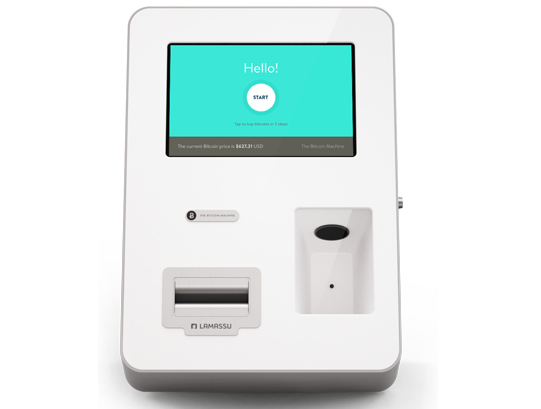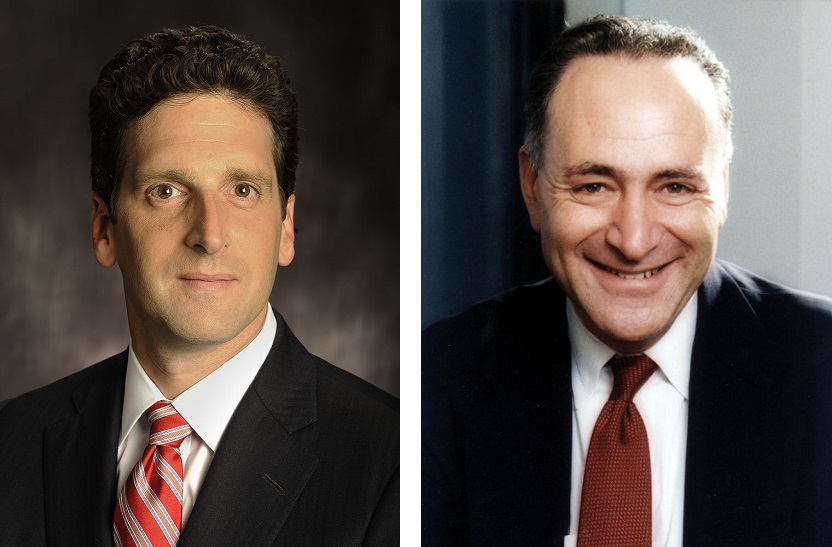Emilio Pagan-Yourno says he has a strong drive to succeed, which is why he decided to create the first company to place Bitcoin ATMs (Bitcoin transaction machines, or BTMs) in New York, Vermont and New Hampshire.
In the beginning, he had the idea to “just put these machines all over.” He explains:
“My initial thoughts were that each machine in Manhattan would make around US$8,000 [per month]. Those were my predictions about a year ago, when I first got the idea to just put these machines all over. They’ve exceeded that. Manhattan is a huge area for Bitcoin. It’s funny because there are more people that buy Bitcoin from the ATM than there are businesses that accept Bitcoin.”
Pagan-Yourno is in his last semester at Marist College in Poughkeepsie, NY, studying information technology systems, a major that he calls “simple.” He says he’s been “bored since his sophomore year.” The boredom led him to seek ways to keep himself busy doing things that were interesting.

— Pagan-Yourno
First, he took a job with the state in 2013 as a Human Resource Information Systems (HRIS) administrator. He incorporated his company, PYC, Inc., in April 2014 and installed his first BTM in Albany, NY, in June. He quit the state job in August, after working there for a year, when he decided to run his business full-time.
He is in the process of rebranding under the name Unbank.World. (The website is scheduled to launch in time for the introduction of two new BTMs on February 16.) He says the new name means to him “what Bitcoin means” to him:
“It’s the easiest way to store money on the internet without going through banks.”
The company currently has five machines in four cities—two in Manhattan, and one each in Albany, Burlington and Manchester. He uses both Skyhooks and Lamassus, and has four more machines on the way (another in Manhattan, plus one each in Brooklyn, Saratoga, and Schenectady).
Cointelegraph asked Pagan-Yourno to talk about what it’s like to own a successful BTM business and to be the first in his area to do so.
Cointelegraph: How did you get into Bitcoin?
Emilio Pagan-Yourno: I got into Bitcoin because I thought it was cool. I read an article on Gawker and I had heard about it before. I thought it was very cool that you could buy drugs on the internet with this currency, and that intrigued me because I like security.
Liberty Reserve was very popular among people for digital currencies, but the only problem was that Liberty Reserve was centralized and they could confiscate your funds at any time. There wasn’t much trust in them. They were based out of Costa Rica and there was no way to get back your money.
What was cool about it was it was anonymous. You could store money on there and it was pegged to the dollar, but you had to go through third parties in order to get money out. You ended up paying I think 10 to 20% to get money out. It was very interesting and I liked the service a lot, until the government shut it down in May of 2013. I only had like US$30 on there, but it was disappointing.
CT: Why don’t you agree with using fiat to derive Bitcoin value?
EPY: I don’t agree with trading platforms. I applaud Bitstamp for implementing multisignature wallets. That was a really big step forward because before you were leaving your money in the control of someone else, a third party, which is basically the same as a bank. If you’re going to hold Bitcoin, it’s important for you to control your funds at all times. That’s the whole point of it. I would not want to see another Mt. Gox.
CT: Do you think Bitcoin should be valued in another way besides fiat?
EPY: I’m not sure how that would happen. People a lot smarter than me might be able to come up with a system like that. A Band-Aid to derivation from fiat would be the distributed shared order book that I’ve been trying to get people to think about [something he says he may write a white paper about in the future]. I like to think that it would dampen the volatility from using these no-liquidity trading platforms.

CT: In November, Coindesk reported that Lamassu owners were making US$36,000 per year. Does that figure match what you’re bringing in?
EPY: No, I’m not doing that amount. Last month, I made US$20,000 off the machines I have. That’s my whole network. The machines in Manhattan total US$17,000 to US$18,000. I forget the exact figures, but they made around 87% of my profit. US$36,000 is more like a figure for a city that’s a little bit larger than Albany. The machines are very popular, and there’s definitely room for more machines or more competition. It would be awesome if there was competition because then I wouldn’t have to service the machines as much.
CT: Does the Bitcoin volatility affect customer traffic and your earnings?
EPY: Yes, this month will not be a US$20,000 month like last month. I actually processed a little more. Last month, Manhattan processed close to US$270,000. This month it did closer to US$290,000 or US$300,000. Because of the volatility, my profits might be half, or even less than US$10,000.
Demand for bitcoin is so high at Crispin's that we need TWO machines!! t.co/eyuVhTKkjT
— Robert Taylor (@robertetaylor) December 20, 2014
— Crispins of NYC joking on Twitter when they replaced their Skyhook with a Lamassu
I bought Bitcoin, and let’s say it then drops 20%. I’m selling at 8% over market, so I lose 12%, for an example. I still beat out the volatility because I’m still profiting, but not as much as I would. If you’re a Bitcoin ATM business and you charge 2%, you’re probably not going to survive. If you charge 5%, that 3% makes a really big difference.
CT: Do you have people who help you service the machines?
EPY: I wish. I’ve been checking out armored truck services, but currently none of the BTM manufacturers have smart combination locking, which is the industry standard required for servicing. That would make my life so easy. Right now, my biggest problem is that the machines fill up with cash, and sometimes I run out of Bitcoin. But that scenario has been taken care of by digitalBTC.
“We sell no matter if the market’s down 50%, or if it’s going up 50%. We’re always selling, unless we run out of Bitcoin. It’s consistent, instant Bitcoins. It’s very convenient, so a lot of people like that."
CT: Are people buying more as the price goes down?
EPY: It seems so because no one wants to sell at a loss. My competition is mainly LocalBitcoins. People are meeting at Starbucks or a Dunkin’ Donuts and exchanging cash for bitcoin. When the market goes down like that, people don’t want to sell because they’re going to be selling at a loss. That’s when the Bitcoin ATMs become very popular. We sell Bitcoin no matter if the market’s down 50%, or if it’s going up 50%. We’re always selling, unless we run out of Bitcoin. It’s consistent, instant Bitcoins. It’s very convenient, so a lot of people like that.
“The whole point of this company is to be disruptive, and I think we’re doing a pretty good job. We’re allowing people to purchase what they want, without fear that their identity is going to get stolen.”
CT: Are you worried about the coming regulations? [Note: CT conducted this interview before NY State released the latest BitLicense on February 5. Updated questions and responses follow.]
EPY: No, I’m not. The whole point of this company is to be disruptive, and I think we’re doing a pretty good job. We’re allowing people to purchase what they want, without fear that their identity is going to get stolen. We’re in compliance with federal regulations, and we have a US$1,000 daily limit.
In the future, our software will be a little more stringent. We’ll have text verification. Phone numbers are not very intrusive, and I think people will be willing to give their phone number in order to purchase some Bitcoin. This is how we will limit people purchasing over US$1,000 a day. Right now, there’s nothing like that, but I’m looking to put that in when the BitLicense is up.
CT: Do you have a response to the latest version of the BitLicense?
EPY: Yes, I do. Part of the appeal of the ATMs is that you don’t need any invasive verification to purchase. Having an ID scan and physical address for people who just want to purchase US$20 of Bitcoin is a deterrent. Ben [Lawsky] is influenced by [US Senator Chuck] Schumer, so he doesn’t really care about hurting my business; however, he most definitely will. Which is why I will most likely need to pivot.

— NY Superintendent of Financial Services Lawsky and U.S. Senator Schumer of NY
CT: By “pivot,” do you mean leave NY State?
EPY: Oh no, just switch models and process purchases through a third party. Think gift cards or the way Western Union conducts business in local stores. People can still transact without third parties, but they won’t be able to purchase Bitcoin without third parties, unless they go to LocalBitcoins.com and find someone who will meet them locally. Even there, the person meeting them is using a third party service to get Bitcoin.
CT: Are you worried about government scrutiny?
EPY: No, I’m not very worried until Chuck Schumer calls me out. That would be really amazing. That would mean I’m doing something right. I’m not a fan of Chuck Schumer. It would be really cool if somebody called me out. That would mean I’m doing a good job.
CT: What are your long-term plans for the company?
EPY: I want to expand past ATMs. ATMs are fun, they’re physical, but they’re quite a lot of maintenance. I would have models that also dispense fiat because it helps in servicing of the ATMs. I wouldn’t have to service them as much if there was a bill recycler. This would be a two-way ATM, so if someone wanted to cash out a Bitcoin and get cash in return, that would help with the servicing so I wouldn’t have to run around so much. Lamassu talked about making a machine like that in the future, but it would be a little bit more expensive. I think it would definitely be worth it. [The BitLicense] only changes the method. I’ll still have the same model, except scalable.
CT: Your least favorite aspect of the business is all the running around you do to service your machines?
EPY: Yeah, I feel like I’m a marathon runner at all times and it gets really tiring.
Did you enjoy this article? You may also be interested in reading these ones:
